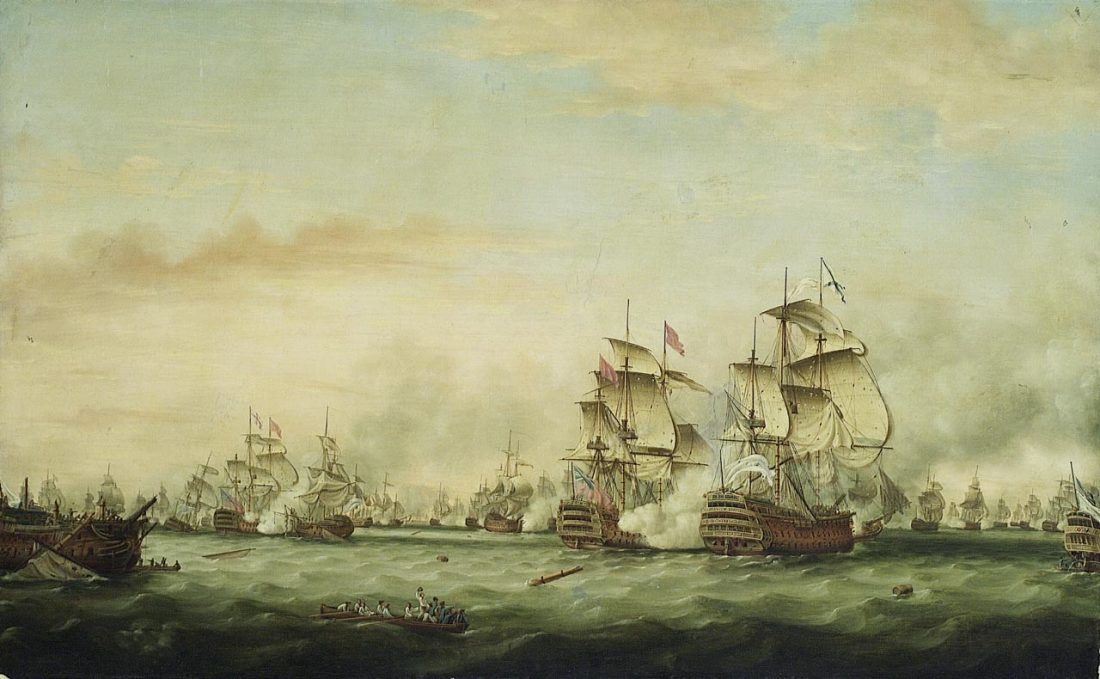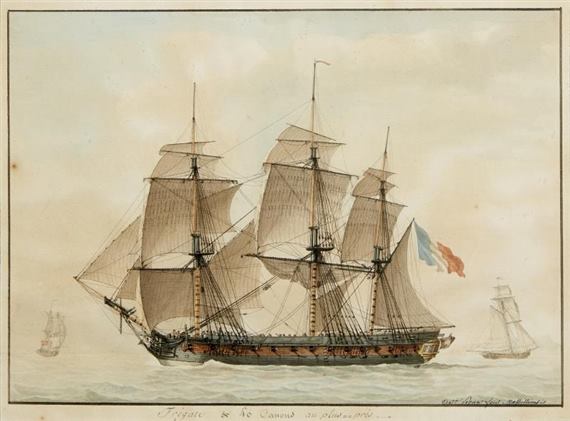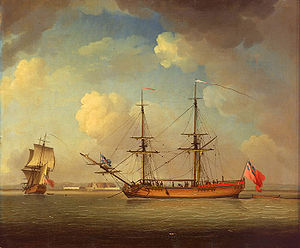HMS Hector 1782 – an epic of leadership and survival

Inman in later years
In a recent blog we met Captain Henry Inman (1762 –1809), a noted frigate commander who was in overall command of operations off Dunkirk in 1800 in which the French frigate Désirée was captured in dramatic circumstances. (Click here to read that blog if you missed it previously). This ship was commissioned into the Royal Navy and Inman was to command her at the Battle of Copenhagen in the following year. Though a man of great ability, Inman’s career was to be dogged by ill health and he died before achieving his full potential. His most impressive achievement was however in his youth – he was only twenty years old at the time – and it was characterised by leadership and seamanlike skills of the highest order. This was when he brought HMS Hector through a nightmare of battle and shipwreck – without him, some 200 lives might almost certainly have been lost.

The Battle of the Saintes, April 1782 – by Thomas Whitcombe (1763-1824)
Promoted to lieutenant in 1780, Inman had already survived two separate shipwrecks. He was on shore duty in the West Indies in April 1782 and thereby missed participation in the large fleet action, The Battle of the Saintes, off Dominica . This had culminated in a crushing British victory over the French. In the course of this engagement the French “74” line-of-battle ship Hector was captured. Though badly damaged in the action she was commissioned into the Royal Navy as HMS Hector. Under the command of Captain John Bourchier (approx. 1755 – 1819) she was ordered to return to Britain. Henry Inman joined her as First Lieutenant. Getting the battered HMS Hector seaworthy for the Atlantic crossing involved removal of 22 of her guns and replacement of her masts with shorter ones, presumably so as not to over-strain her hull. Her crew was significantly short-handed, some 300 men, many of whom were invalids. In normal circumstances a ship of this size would carry a crew of 500 to 700 men and it is therefore obvious that her fighting ability was very seriously impaired. She sailed in late August, none on board suspecting that she would have to survive a violent hurricane that was to spell doom for other survivors of the Saintes Battle and killing over 3500 men.

A French frigate by Antoine Roux (1765-1835 ) – L’Aigle and Gloire would have looked similar
Before the unanticipated hurricane another enemy had to be confronted. On the evening of September 5th HMS Hector was found by two 40-gun French frigates, L’Aigle and Gloire. These fresh, undamaged vessels quickly perceived HMS Hector’s decrepitude and one placed herself on her beam, and the other on her quarter and began to pour fire into her. Poorly manoeuvrable, HMS Hector was badly placed to avoid several rakings but she returned fire sufficiently to damage both attackers. It was a very creditable performance for a ship so weakly manned and armed. Even so, had the French vessels continued the bombardment from a distance they might have sunk HMS Hector. Instead they made the mistake of attempting to board and their efforts were bloodily repulsed. The action was broken off after six hours and both French ships bore off. (They were to be captured by a British force off the Delaware coast a week later – the damage sustained in the conflict with HMS Hector quite possibly a contributory factor).

The “74” HMS Theseus surviving a hurricane in 1804
HMS Hector’s plight would have been even worse as she had lost both masts and rudder
Hector’s survival had been dearly bought. 46 of her crew had been killed or wounded, an especially serious concern when so many of her complement were already invalids. Captain Bourchier had been so badly wounded as to be incapacitated and effective command now passed to the twenty-year old Henry Inman. The ship herself had been weakened yet further – the hull had sustained more injury, as had the masts, rigging and sails.

“All Hands to the Pumps” 1889
by Henry Scott Tuke
It was in this state that HMS Hector was to encounter the massive hurricane that swept through the Central Atlantic on September 17th. Battered by high seas, she lost her rudder and all her masts. Leaks were sprung and incoming water reached a level at which a major portion of the provisions and fresh water was spoiled. Survival now became a matter of continuous pumping, a labour that demanded physical exertion on an open wind and spray-lashed deck which would have been severe for a fit and healthy crew, but almost impossible for one so debilitated. The pumping ordeal was to last two weeks, with Inman – himself driven to the limits of exhaustion – needing at times to resort to the threat of his pistols to keep men at the task. Many appear to have died from fatigue while those who had finished their turns had no energy to do other than lie, washed over by surging water, in the scuppers. Despite these efforts the water level was still rising inside the stricken hulk. Men already sick were dying daily and in the last four days of these two weeks the ship was without drinking water even as the hull structure began to disintegrate.
It was at this extremity, when hope was all but abandoned, that a sail was spotted. This was the tiny snow Hawke, of Dartmouth, Devon, under the command of a Captain John Hill. Though the seas were still high Hill brought her alongside HMS Hector, remained with her through the night, and in the morning commenced transfer of the survivors, now only some 200 in total, including the wounded Captain Bourchier. Henry Inman remained on HMS Hector until the last man had left. She sank ten minutes after he reached the Hawke.

A naval snow, 1759, by Charles Brooking
The figures on deck give an idea of just how small a craft such a vessel was
The situation was now only slightly less desperate. The Hawke was small – it is unlikely that she would have been longer than 100 feet – and to make room for Hector’s survivors necessitated dumping much of her cargo overboard. Even at that she was so grossly overcrowded, and the extra weight taken on gave such concern for stability, that Hill and Inman had to enforce orders regarding how many men could be on deck at any one time. Food was quickly depleted, despite rationing, and the water allowance was only a half pint per man per day. Despite this caution only a single cask of fresh water remained when land was sighted close to St. John’s, Newfoundland.
Inman and Hill were – deservedly – the heroes of the hour and were carried in triumph through the streets of St. John’s. Without the skill and bloody-minded determination of both men, the death toll would have undoubtedly been higher. With his health badly impaired by his ordeal Inman was put on half-pay on his return to Britain and this was to until 1790 that he was again assigned a command.
What a man!



